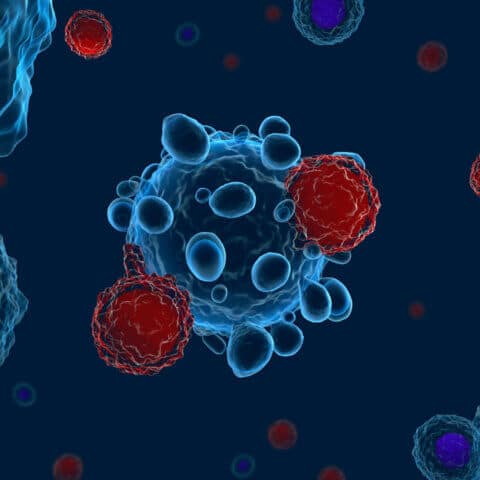Today there are over 10,000 rare diseases affecting more than 30 million people in the U.S.1 Many of these disorders are life-threatening, and more than 90% do not have a U.S. FDA-approved treatment2. Novel gene therapies offer hope for improving the health of patients afflicted with these conditions.
Securing clearance for these treatments is a complex process, however. In an effort to facilitate communication with product development stakeholders and researchers on the approval path, the FDA’s Office of Tissues and Advanced Therapies (OTAT) at the Center for Biologics Evaluation Research (CBER) launched a virtual Town Hall series through which participants can gain regulatory insights to help advance their drug development. During the February 7, 2023 session, OTAT centered on the topic of gene therapy clinical development for rare diseases.
Though a number of important points were addressed in the February event, in this post we highlight the discussion around the selection of patient populations in early-phase studies. Within this topic, clarifications and insights were offered around the related concerns of optimizing the benefit-risk profile, considerations around adult vs. pediatric participation and consent, healthy volunteers, and customization.
Benefit and risk: A balancing act
In benefit-risk analysis, factors to consider include a patient’s underlying condition; the expected product benefit based on preclinical proof-of-concept data; the foreseen and potential product toxicities; and other available therapies, if any, for treating the disease.
In an early-phase study, the potentially significant risks of a gene therapy are not well understood. Thus, sponsors should first enroll patients who are most likely to benefit from the new drug – typically those with more severe or advanced disease. However, if the therapy being developed is presumed to predominantly aid patients with early-stage or moderate disease, it is more appropriate to focus on that cohort first.
Because of gene therapy toxicity concerns, a patient’s general health, especially comorbidities, should be considered when choosing subjects for first-in-human studies. Other than the targeted condition, patients should have limited comorbidities in order to allow them to better tolerate the potential toxicities that may accompany the the experimental treatment. The presence or absence of other disease-modifying therapies should also be taken into account when assessing candidates.
Patient consent: Adults first
With regard to patient consent, if the disease in question affects adults, whenever possible sponsors should evaluate their gene therapy in adult patients first to make a preliminary safety determination before testing children. With some exceptions, such as neurodegenerative disorders that affect cognitive capacity, an adult can give knowledgeable consent to anticipated trial conditions once he or she has been adequately informed of the risks and potential outcomes. On the other hand, the pediatric population can, at best, provide assent; the youngest children, of course cannot do so.
On the other hand, the pediatric population can, at best, provide assent; the youngest children, of course cannot do so.
Under some circumstances, however, pediatric enrollment might be appropriate in early-phase gene therapy trials. If there is no suitable adult population in which to first test the treatment to assess safety and establish proof-of-concept, children may need to be the first early-phase study subjects. Since these therapies can harbor toxicities, and the first trial subjects are the most vulnerable, older children afflicted by the disease who can provide assent to trial participation should be enrolled first if feasible.
A popular question: To include healthy volunteers or not?
Sponsors often ask, “would it be appropriate to enroll healthy volunteers in our early-phase gene therapy trial?” A study of healthy adult volunteers may be reasonable in an early-phase trial for a product with short duration of action or in a class of products with a well-understood safety profile. But the risks of most gene therapy products include the possibility of extended or permanent effects, in addition to the risks of any invasive procedures necessary for product administration. Given these considerations, for virtually all gene therapy trials, the benefit-risk profile is not acceptable for enrolling healthy volunteers.
However, one exception to including healthy volunteers in these studies is in trials of patients with human immunodeficiency virus (HIV). Volunteers whose condition is well-controlled with chronic antiviral therapies have been allowed to participate in early clinical trials of gene therapies intended to treat HIV because of the strong desire to find a cure. Importantly, there are ethical considerations associated with enrolling HIV-positive but otherwise healthy volunteers, and these considerations must be reassessed as the technology advances.
Not a one-size-fits-all: The study population must be customized
Sponsors should also understand that the study population for a gene therapy early-phase trialmust be customized for the specific development program. The FDA recommends that the sponsor’s research team discuss evaluation and selection of prospective participants with OTAT during the planning phase. The agency is committed to expediting gene therapy development to help drug and device companies speed innovative products to market and address the significant unmet medical needs of patients living with rare diseases.
It all comes down to these core principles
When selecting the study population for a gene therapy early-phase trial, the two key principles that sponsors should observe are optimizing benefit-risk and considering the patients’ ability to provide informed consent. The population must also be customized for the specific development program. The FDA’s OTAT office at CBER is available to support product development stakeholders and researchers with regulatory information to advance promising new treatments and accelerate time-to-market.
Partnering with a CRO that has experience in the end-to-end development of both rare diseases and cell and gene therapy (CGT) products can give biotech innovators a head start in clinical trial planning. At Premier Research, our expertise encompasses more than 240 rare disease and more than 95 CGT projects across multiple indications and treatment modalities in just the past 5 years. To learn more about how we can help at every stage of CGT product development, contact us.
[1] National Institutes of Health (NIH) Genetic and Rare Diseases (GARD) Information Center. Accessed August 14, 2023. Available at https://rarediseases.info.nih.gov/about
[2] National Organization for Rare Disorders. Rare Disease Facts & Statistics. Accessed June 26, 2023. Available at https://rarediseases.org/understanding-rare-disease/rare-disease-facts-and-statistics/.




